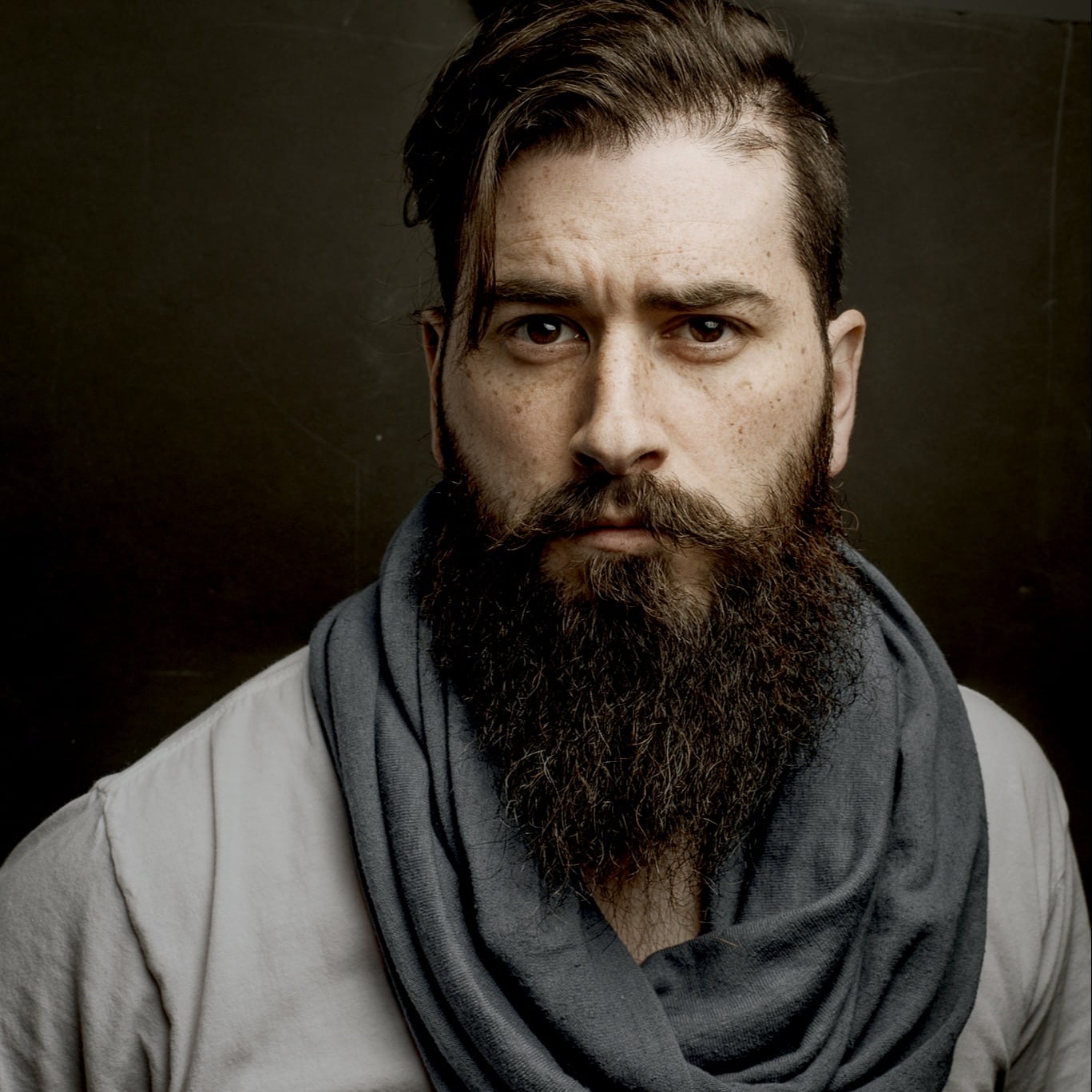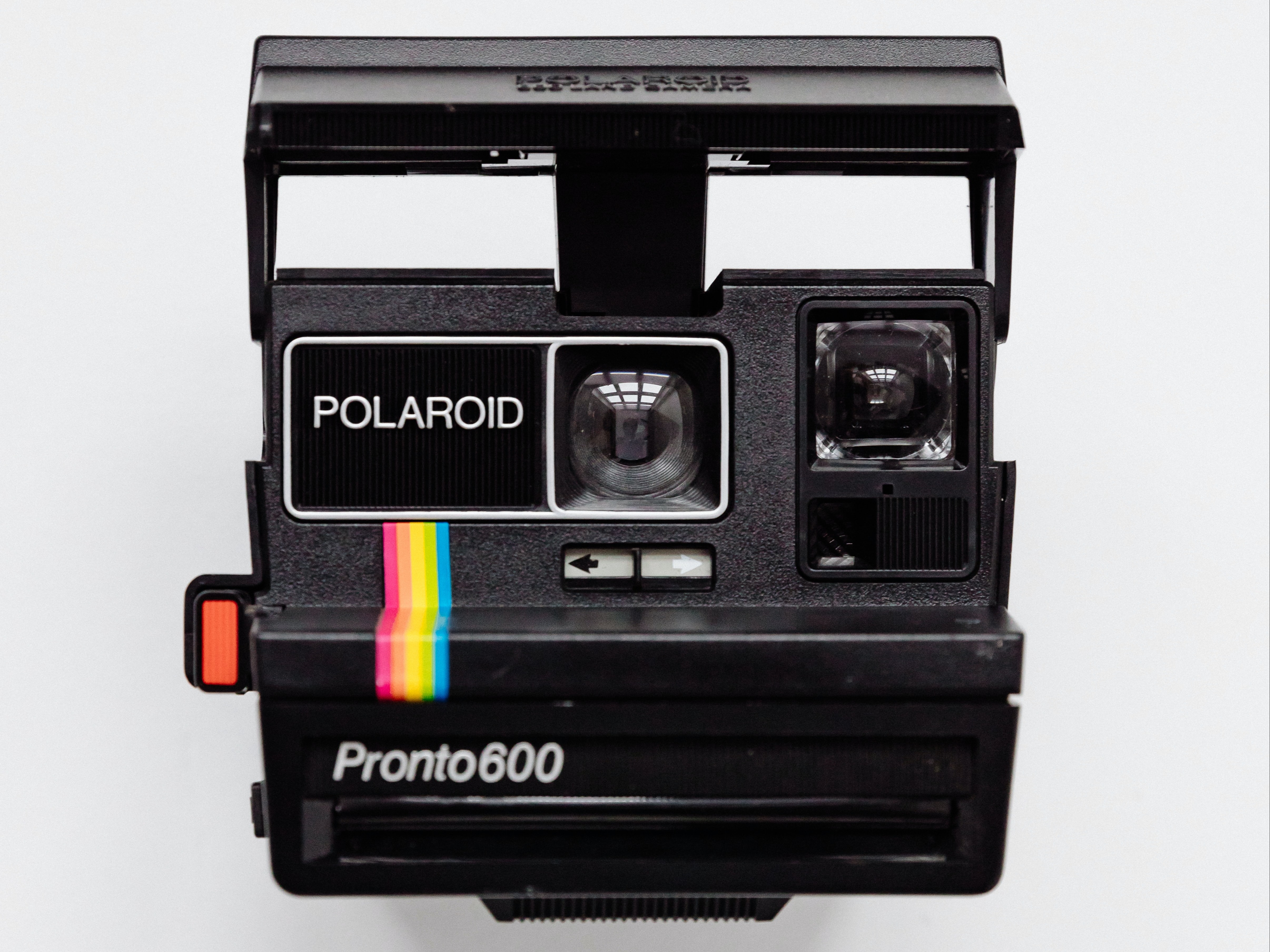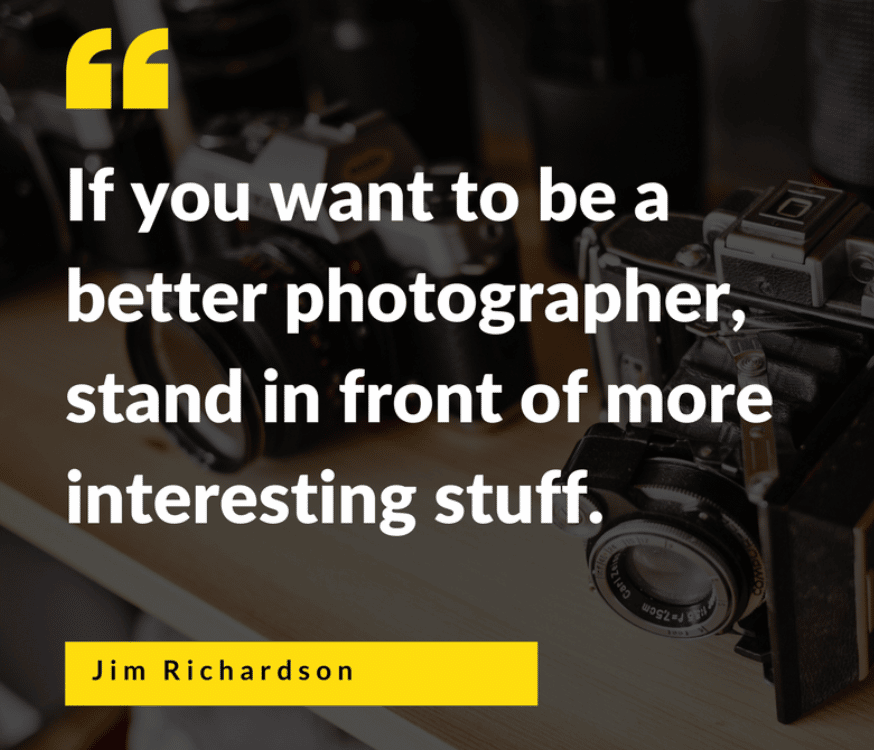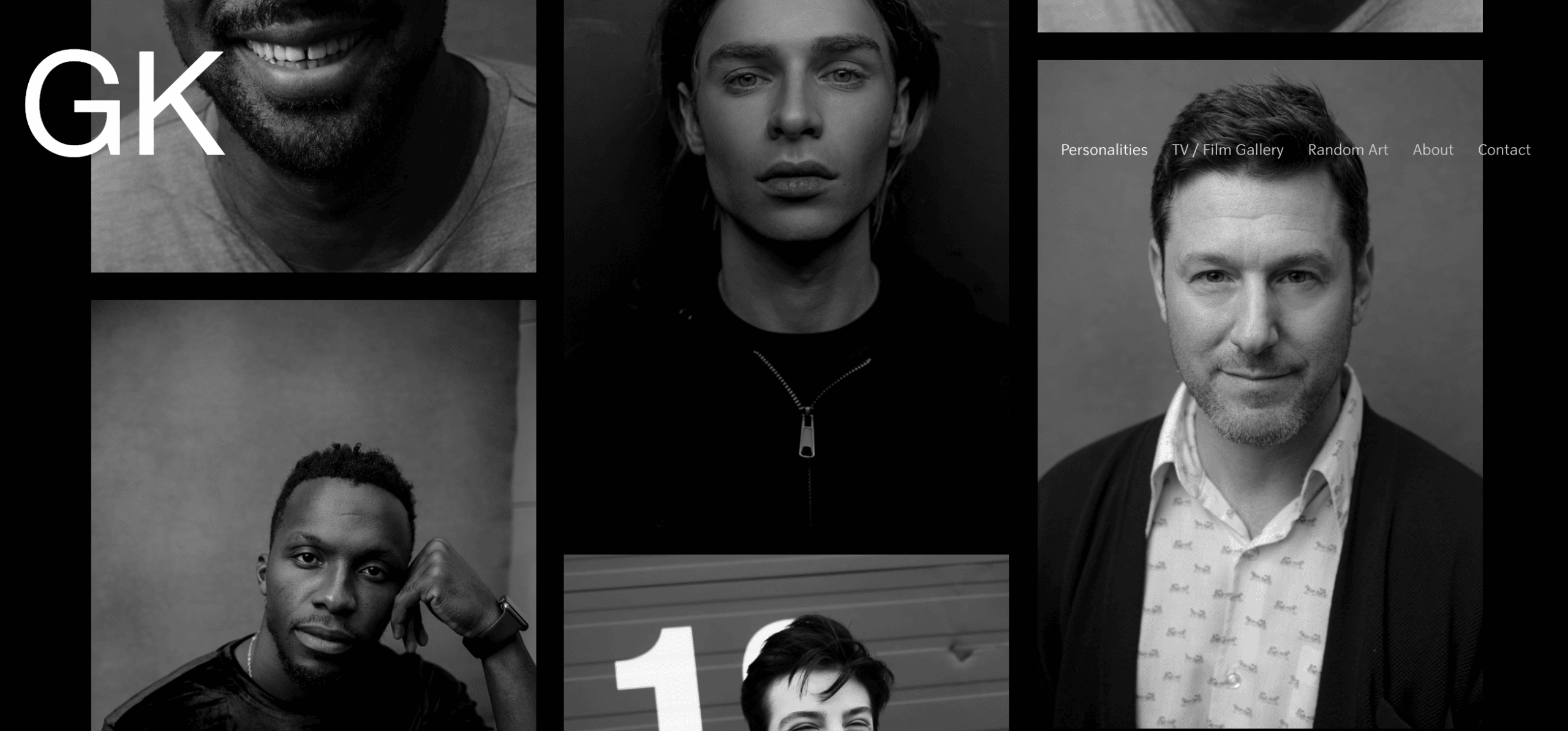Gerry Kingsley is an internationally published photographer and cinematographer based out of Northern Ontario, Canada.

Recognized for his experimental and unconventional techniques, Gerry has worked on several feature films, TV series’, short films and photographed portraits of personalities like Robbie Amell, Jessica Barden, and Adrian Holmes. Gerry has been a Format Member since 2017.
Finding photography in his small town
Gerry grew up in the 80s and 90s in Sudbury – a mining town about a four-hour drive north of Toronto. He described it as a rural place where most people worked for either the government, the schools, or the mines their whole lives before retiring. It was an “old school mentality” that left little room to encourage art as anything more than a passtime.
But, as fate would have it, Gerry’s dad came home one day with a Polaroid camera. A salesman by trade, he had been tasked with taking pictures of sales displays and sending them back to head office.
Gray, boxy, and the “ugliest camera you can think of,” Gerry found himself captivated by it.

Lining up his action figures and toys for the perfect shot, Gerry would capture “little fantastical worlds” that filled his days with joy and wonder.
By high school, Gerry had a bit of a reality check. It became more and more apparent to him that in his small northern town, there were no pathways to a successful career as an artist or photographer. So instead, he started delving into computers, web and graphic design – building his own computers with parts picked up at yard sales.
Soon, computers were his career. For the next 10 years, Gerry became a computer technician working on IBM and HP systems across Northern Ontario. But when 2008 rolled around and the financial crisis hit, the national IT company he was working for went out of business. Gerry no longer had a job.
“That was a pivotal moment where I was able to really stop and think,” he said.
He thought about how he was still practicing photography as a hobby and eventually began considering the opportunity to take his career in a new direction.
“I thought to myself, I’ll get an odd job for now and then I’ll just build up [photography as a] profession until something happens,” he said. “From there, I kind of just built it up and up.”
Gerry has been a commercial photographer and cinematographer for over 13 years now and a Format member for four.
“One gig to another, and another”
As professionals and enthusiasts would know, photography offers a diverse range of possibilities. Thus, finding a niche can be an essential and rewarding feat. It was through experimentation and trial and error that Gerry figured out what he did (and didn’t) enjoy.
When he first started out, Gerry enjoyed going out at night with his buddies shooting single exposure star trails.

But when it came to family portraits, his feelings differed. After enduring three years of family and friends asking him to shoot family photoshoots and weddings, he knew it wasn’t his thing. He realized he enjoyed more artistic photography, specifically dramatic, creative portraiture.
Shortly after this realization, Gerry opened a small portrait studio in Sudbury offering unique, artistic portraiture. He caught the eye of a local director and a couple of producers who liked his style. They approached him, asking him to take photos on film sets.
He also began teaching photography at the local college, and soon, the university in Sudbury hired him to teach the photography class as part of their Motion Picture Arts program. That opportunity led to more contacts in the film industry.
Before long, Gerry was worrying less and less about the minor details when he was shooting – instead, he was more confident in himself, his abilities, and the career he had taken a chance on. He knew he was on the right track.
“I got the one gig and it led to another, and another,” he said. “My career grew and grew from there.”
Turning inspiration into something original
For Gerry, Armenian-Canadian photographer Yousuf Karsh is a profound source of inspiration. Simple, black-and-white, yet strikingly profound and emotive, Karsh’s portraits featured many of the 20th century’s most influential people. From Muhammad Ali to Audrey Hepburn; Queen Elizabeth II to Walt Disney; Albert Einstein to Mother Teresa.
“It’s just absolutely bananas,” Gerry said, describing Karsh’s portfolio. “His work is phenomenal.”
One of Gerry’s favourite Karsh portraits is that of Pablo Picasso, photographed next to one of his art pieces – a tall ceramic vase with the bare backside of a woman painted on the exterior. Looking straight on, Picasso leans slightly in the direction of the vase with one arm stretching across the table, and the other supporting his chin.
“It’s black and white, but it’s moody with not much going on in the background, but it’s just nice light,” he said. “It’s always an inspiration.”
Though Gerry has never wanted to reinvent the wheel when it comes to portraiture, he says he has also never wanted to copy or emulate the work of others. Instead, he likes to delve back into the basics, studying art fundamentals to get to know himself better as an artist.
“I take inspiration from places, but ultimately, one of my main pathways and goals is to try to find my own style. Hopefully, it’s unique and hopefully people will recognize it as that.”
Advice for up-and-coming photographers
With over a decade in the business, Gerry has plenty of insightful advice, backed by equally insightful stories.
My recommendation for photographers starting out is to learn how to run a business. Basic stuff like how to manage your clientele, how to manage your contacts, how to do invoicing properly – knowing these things will be very helpful.
1. Learn how to run a business
One of what he considers his “biggest failings” early on in his photography career was having a very poor business setup.
“I’m definitely not a business person – I don’t have a business mindset,” he said. It took him two to three years to set up a business workflow that worked for him – one he can finally say he doesn’t have to think too much about.
“My recommendation for photographers starting out is to learn how to run a business. Basic stuff like how to manage your clientele, how to manage your contacts, how to do invoicing properly – knowing these things will be very helpful.”
“As an artist, you don’t think about business – you’re just thinking about the scene, the emotion, what you’re trying to convey in your work. Now that I have everything in a workflow, I have more time to spend on the things that are more meaningful to me, like my craft.”
If you have a good craft, or if you’re already a great craftsman, you should be able to create a solid image with any tool you have.
2. It’s not about the camera
Another piece of advice he offers is to not be so hard on yourself, especially when it comes to equipment. While casually having lunch on the set of the film The New Romantic, he was able to capture one of his more famous black-and-white portraits of actress Jessica Barden, using a small 10-year-old Panasonic Lumix GF1 he had kicking around.
Comparing the image to photos he had taken on his current professional camera, he realized there was barely a difference in quality, especially when viewed online.
“It’s not about the camera – it’s about the image itself, it’s about the subject,” he said. “The camera is just a tool to get the job done. If you have a good craft, or if you’re already a great craftsman, you should be able to create a solid image with any tool you have.”
That’s why the most important thing is to get out there and actually do stuff. That’s how you create the images and that’s how you get the visuals you want.
3. Stand in front of interesting things
Long-time National Geographic photographer Jim Richardson has said, “If you want to be a better photographer, stand in front of more interesting stuff.” That’s a quote that’s left a lasting impression on Gerry’s work over the years.

For Gerry, a good photograph is never complete without an interesting subject. Even if the image might turn out to be technically flawed in some way, he doesn’t think it would matter.
“You really have to stand out and stand in front of interesting things,” he said. “That’s why the most important thing is to get out there and actually do stuff. That’s how you create the images and that’s how you get the visuals you want.”
The future is bright
Three years ago, Gerry did his first short film – today, he’s shooting movies for Canadian director B.P. Paquette.
Paquette was looking for somebody to do experimental techniques with optical illusions when he found Gerry, who fit the bill quite well.
“My goal now is to continue building the portrait side of my business and have it maintain itself while also taking on one feature film per year,” Gerry said.
“The best thing for me would be to not have to chase clients. I’d love to be picking and choosing the clients that I want to work with. I think that’s the ideal situation to be in.”
Gerry also continues to do gallery shoots on big feature film sets in Northern Ontario. One of his goals is to be able to capture profound portraits of recognizable personalities coming up to the northern parts of Ontario. While smaller cities like Sudbury often get overlooked, it’s where he grew up and where he was able to turn a life-long passion into a thriving career.
“We’re often forgotten about up here in Northern Ontario, but there are a lot of creatives here and it’s important to recognize that.”
Gerry uses Format’s Online Photography Portfolio to showcase his work and grow his business.

He uses Format’s Workflow tool to run his business seamlessly, giving him more time to do what he loves most – photography.
Follow Gerry on Instagram @gerryatwork












